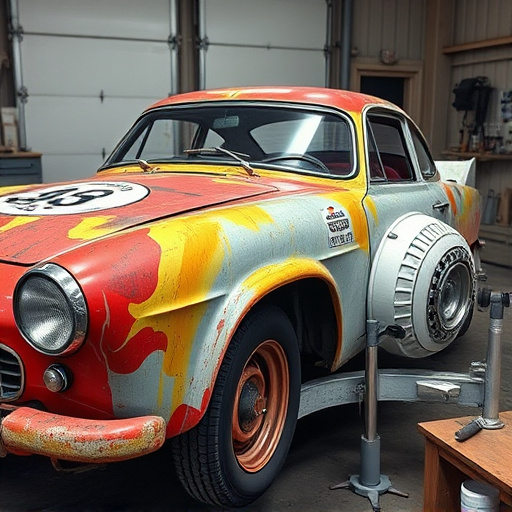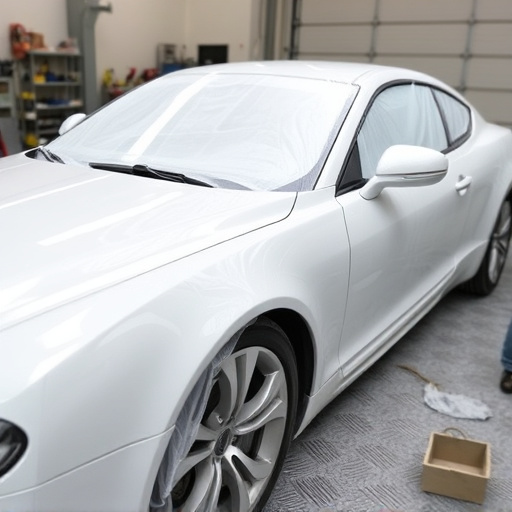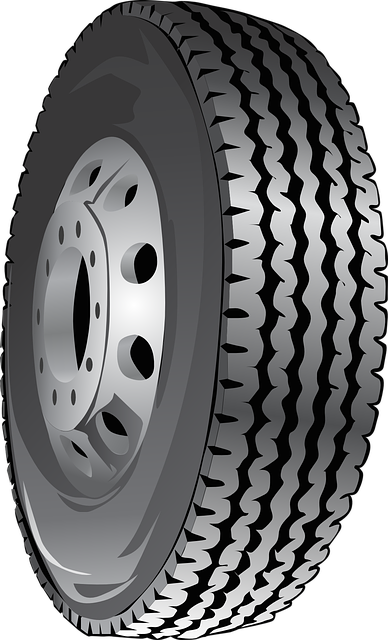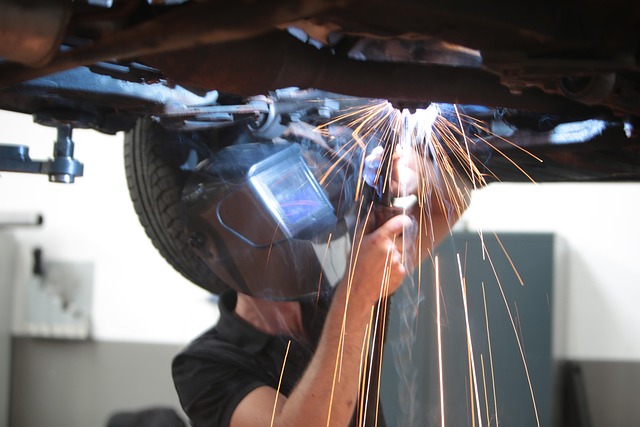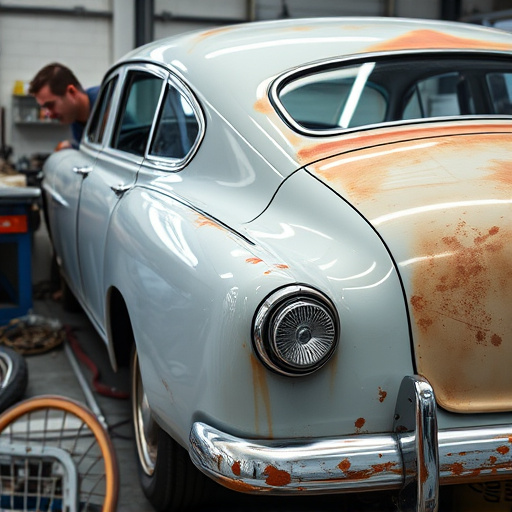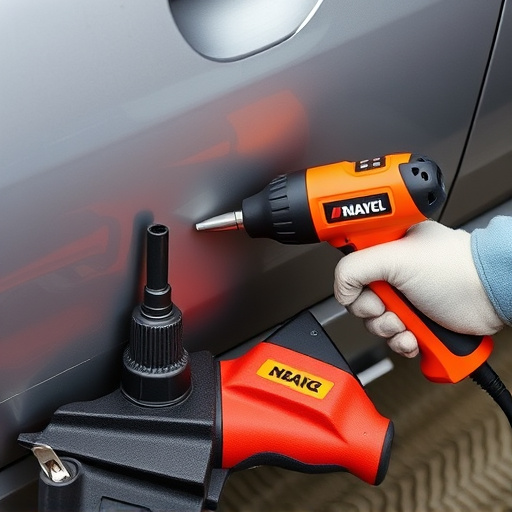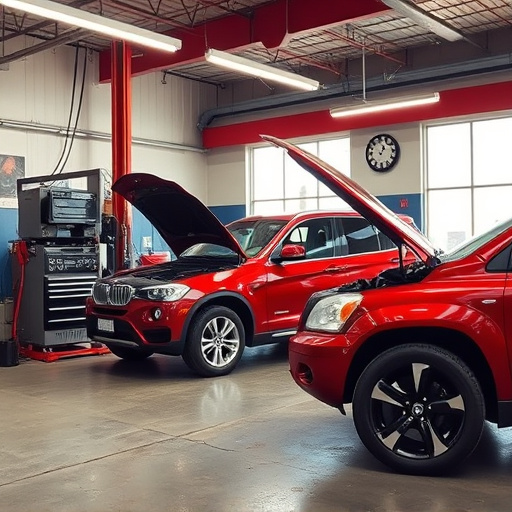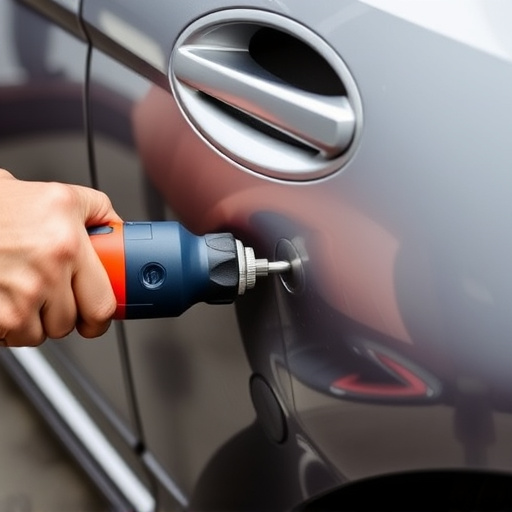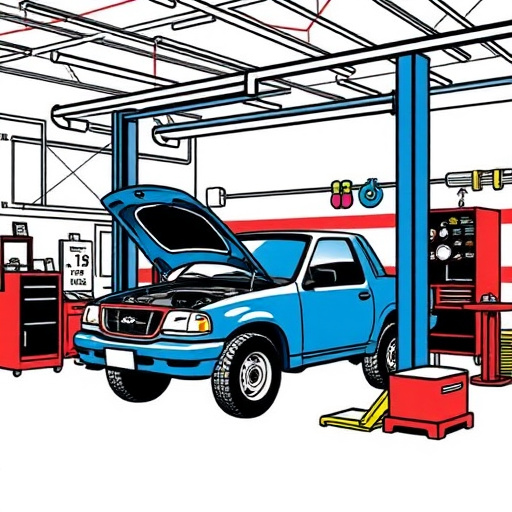Dog leg repair is a critical component of vehicle body restoration, addressing misaligned or bent car doors and panels. Skilled technicians use advanced techniques, precise measurement, and expert manipulation to ensure structural integrity and match the original factory finish. Effective training combines technical skill with empathy, focusing on dog leg mechanics, hands-on practice, and continuous learning. Best practices include standardized processes, quality assurance checks, clear guidelines, and integrating auto maintenance/detailing principles for superior repair outcomes.
“Unleash your team’s potential in performing effective dog leg repairs with this comprehensive guide. Dog leg repair, a critical skill in veterinary care, involves precise techniques to restore mobility and comfort for our canine companions. This article navigates the essential steps in training staff, from understanding the fundamentals of dog leg repair to implementing best practices. By mastering these skills, your team will be equipped to handle various cases, ensuring positive outcomes for injured dogs.”
- Understanding Dog Leg Repair: Techniques and Importance
- Staff Training Steps for Effective Dog Leg Repair
- Best Practices and Tips for Post-Training Implementation
Understanding Dog Leg Repair: Techniques and Importance
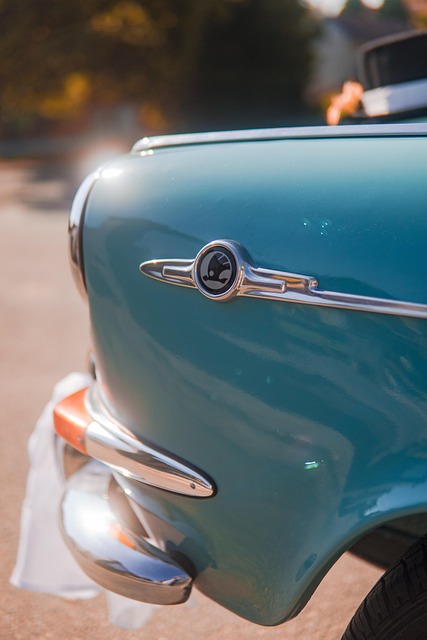
Dog leg repair is a critical aspect of vehicle body repair, focusing on correcting misaligned or bent car doors and panels. This technique is essential for maintaining the structural integrity and aesthetic appeal of a vehicle. Skilled technicians employ various techniques to achieve precise results, ensuring the repaired area matches the original factory finish.
Effective dog leg repair involves careful assessment, precise measurement, and expert manipulation of the affected panel. It goes beyond simple dent removal; it’s about restoring the car’s overall structural harmony and visual appeal. The process demands a deep understanding of vehicle design, advanced tools, and meticulous attention to detail to match the original specifications, ensuring the repaired area is as good as new.
Staff Training Steps for Effective Dog Leg Repair

Training staff for effective dog leg repair involves a meticulous process that combines technical skill and empathy. Begin by equipping employees with a thorough understanding of car bodywork, particularly focusing on the intricate mechanics of the dog leg assembly—a critical component in ensuring vehicle stability and safety. This includes studying the various types of dog legs, their functions, and common failure points. Hands-on training is paramount; engage staff in practical exercises using mock-up parts or actual damaged vehicles to familiarize themselves with disassembly, inspection, and precise replacement techniques.
Encourage open communication and continuous learning. Staff should feel comfortable asking questions and sharing insights during and after training sessions. Regular refresher courses and workshops can help keep skills sharp and up-to-date with evolving auto collision center best practices. Incorporate real-world scenarios into training to simulate the complexities of in-shop repairs, ensuring that staff are prepared for whatever comes their way on the job—from minor scuffs to major accidents—all contributing to superior dog leg repair outcomes.
Best Practices and Tips for Post-Training Implementation
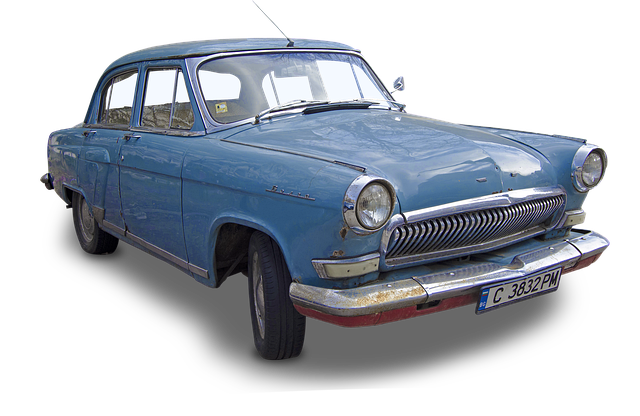
After training is complete, it’s essential to translate knowledge into action for effective dog leg repair. Best practices include establishing a standardized repair process that aligns with industry standards and best practices in automotive collision repair. This ensures consistency and minimizes errors across all staff members. Regularly reviewing repair procedures and conducting quality assurance checks can help maintain high standards.
Implementing post-training tips, such as providing clear, concise guidelines for each step of the dog leg repair process, is crucial. Additionally, fostering open communication channels allows staff to ask questions and share insights, further refining their skills. Incorporating auto maintenance and auto detailing principles into the training curriculum equips employees with a holistic understanding of vehicle care, promoting a culture of meticulous craftsmanship and customer satisfaction.
Training staff for effective dog leg repair is a multifaceted process that combines theoretical knowledge with practical application. By understanding the techniques and importance of dog leg repair, implementing structured training steps, and adhering to best practices post-training, organizations can ensure their staff are equipped to provide high-quality care for dogs with this specific need. Investing in proper training fosters a safer and more supportive environment for these canine companions, ultimately enhancing their quality of life.

